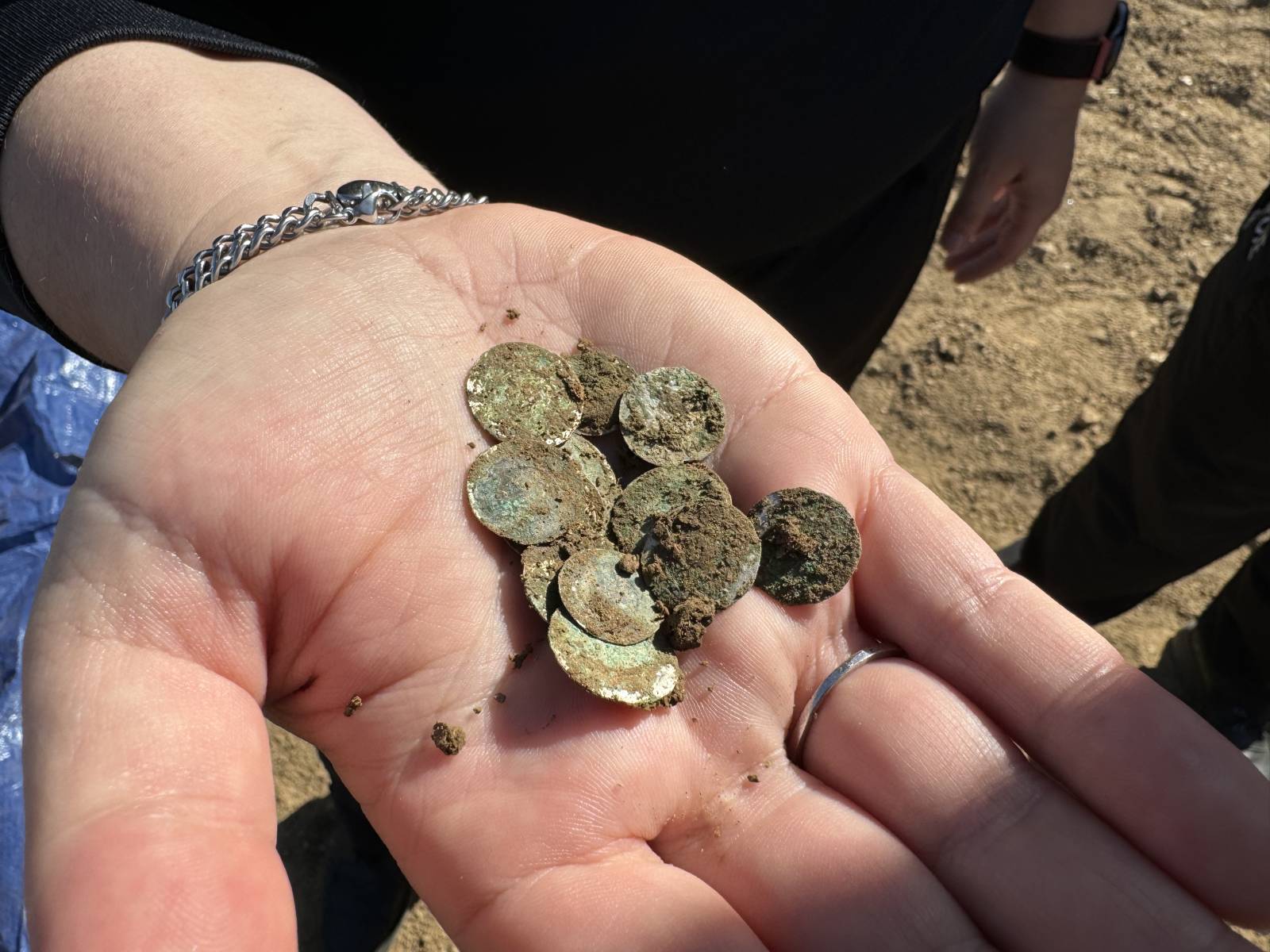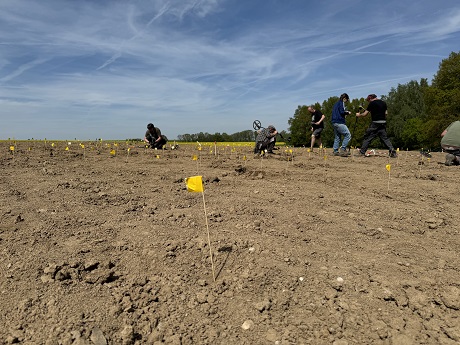
Over 2,000 silver coins from the 12th century discovered near Kutná Hora
28. 05. 2024
The coins had been buried for roughly 900 years until a woman stumbled upon them while walking across a plowed field. Initially stored in a ceramic vessel, the coins were found scattered both on and below the surface. Experts consider this medieval hoard of denarii from Kutná Hora one of the largest finds of the past decade. Archaeologists and historians will now examine the coins in detail before presenting the treasure to the public.
The coins likely date back to the first quarter of the 12th century – a turbulent period marked by conflicts among members of the Přemyslid dynasty over control of the Prague princely throne. At the time, this collection would have represented an immense amount of money and was possibly intended as war booty or to pay soldiers.
“Unfortunately, we lack precise data on purchasing power from the turn of the 11th to the 12th century, but it was certainly a colossal, unimaginable, and inaccessible amount of money for the average person. Today, we’d compare it to winning a million-dollar jackpot in the lottery,” explains Filip Velímský from the Institute of Archaeology of the Czech Academy of Sciences in Prague.

During their survey with metal detectors, archaeologists marked all the sites where they discovered coins with yellow flags.
What did the coins look like?
The unique find of medieval coins in the region of Kutná Hora consists of more than 2,150 coins, among which experts have so far identified mints from three Přemyslid rulers – King Vratislaus II and Princes Bretislaus II and Bořivoj II (ca 1085–1107).
“The coins were most likely minted at the Prague mint using silver that was imported to the Czech lands at the time,” says Lenka Mazačová, Director of the Czech Museum of Silver in Kutná Hora. The coins were made from a mint alloy containing silver, copper, lead, and trace amounts of other metals. Identifying this specific composition can help trace the origin of the silver used.

The oldest Czech coins as portrayed in František Cach’s book.
When will the treasure be displayed to the public?
The experts commend the woman who discovered the coins for promptly reporting the treasure. This allowed them to arrive without delay and begin their work. The scattered coins were located using metal detectors, and everything was carefully documented. Accurate documentation of the circumstances of the find later on can come in handy when processing the artifacts.
The denarii will undergo both traditional and X-ray imaging as well as spectral analysis to determine their exact material composition. “Museum staff will record all parts of the find into the museum’s collection, ensure each coin is cleaned, perform any necessary restoration work, photograph the coins for publication and promotion, and provide numismatic identification, including compiling a detailed catalog,” Mazačová explains.
The goal is to ultimately make this extraordinary find accessible to the public, with plans to display it as part of the minting exhibition in the Czech Museum of Silver in Kutná Hora. Visitors might be able to peruse the treasure as early as summer 2025.

The discovery site of the silver coin hoard from the turn of the 11th and 12th century, uncovered by archaeologists in the Kutná Hora region.
Written and prepared by: Leona Matušková, External Relations Division, CAO of the CAS, drawing on the CAS press release (in Czech)
Translated by: Tereza Novická, External Relations Division, CAO of the CAS
Photo: Institute of Archaeology of the CAS, Prague
Read also
- An epileptic seizure doesn’t always strike out of the blue, says Jaroslav Hlinka
- Radomír Pánek nominated for the next President of the CAS
- Four CAS projects get ERC Consolidator Grants, each to receive two million euros
- Groundbreaking study maps brain’s recovery process after stroke
- A / Magazine: light, the dawn of quantum computing, and no man’s lands
- Of Mice and Men: Researchers reveal link between human and mouse migration paths
- Czech and Saxon Academies of Sciences to strengthen cooperation on key issues
- Laser micromachining: inspired by sharks
- CAS researchers received the 2024 Praemium Academiae and Lumina Quaeruntur
- Light – Illuminating the invisible
The Czech Academy of Sciences (the CAS)
The mission of the CAS
The primary mission of the CAS is to conduct research in a broad spectrum of natural, technical and social sciences as well as humanities. This research aims to advance progress of scientific knowledge at the international level, considering, however, the specific needs of the Czech society and the national culture.
President of the CAS
Prof. Eva Zažímalová has started her second term of office in May 2021. She is a respected scientist, and a Professor of Plant Anatomy and Physiology.
She is also a part of GCSA of the EU.